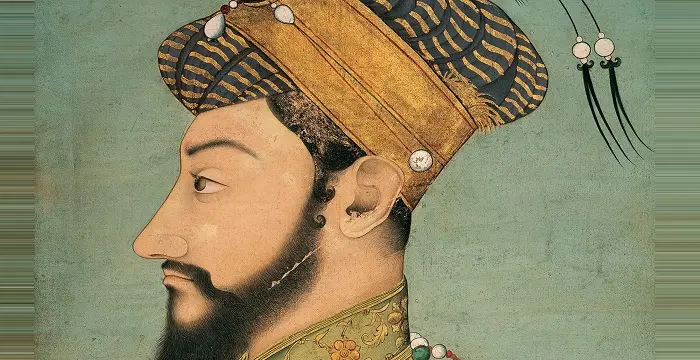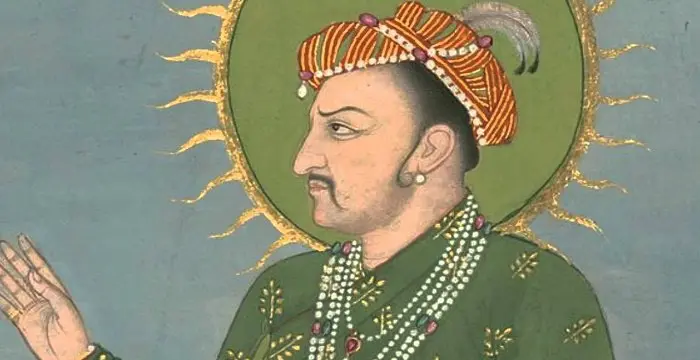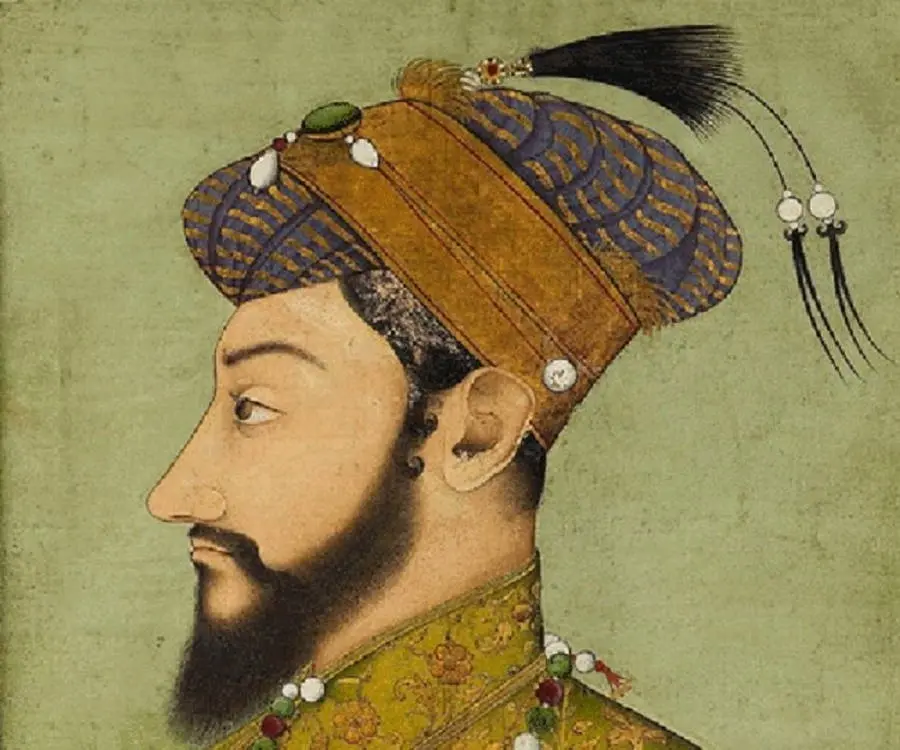
Aurangzeb - Emperors, Family and Childhood
Aurangzeb's Personal Details
Aurangzeb was the sixth Mughal Emperor of India
| Information | Detail |
|---|---|
| Birthday | November 4, 1618 |
| Died on | March 3, 1707 |
| Nationality | Indian |
| Famous | Historical Personalities, Emperors & Kings, Emperors, Kings, Mughal Emperor |
| Spouses | Aurangabadi Mahal, Dilras Banu Begum, Hira Bai Zainabadi Mahal, Nawab Raj Bai Begum, Udaipuri Mahal |
| Siblings | Dara Shikoh, Murad Bakhsh, Roshanara Begum, Shah Shuja |
| Known as | Abul Muzaffar Muhy-ud-Din Muhammad Aurangzeb |
| Childrens | Badr-un-Nissa, Bahadur Shah I, Mehr-un-Nissa, Muhammad Azam Shah, Muhammad Kam Baksh, Sultan Muhammad Akbar, Zabdat-un-Nissa, Zeb-un-Nisa, Zinat-un-Nissa, Zubdat-un-Nissa |
| Birth Place | Dahod |
| Religion | Islam, Sunni Islam |
| Gender | Male |
| Father | Shah Jahan |
| Mother | Mumtaz Mahal |
| Sun Sign | Scorpio |
| Born in | Dahod |
| Famous as | Mughal Emperor |
| Died at Age | 88 |
// Famous Mughal Emperor
Akbar
Mughal emperor Akbar was one of the greatest monarchs in the history of India. This biography profiles his childhood, life, rule, achievements and timeline
Shah Jahan
Shah Jahan was the fifth Mughal Emperor of India. He is famous for constructing the Taj Mahal. This biography of Shah Jahan provides detailed information about his childhood, life, achievements, works & timeline.
Jahangir
Jahangir was the fourth Mughal emperor, counted amongst the greatest Indian Emperors. This biography of Jahangir provides detailed information about his childhood, life, achievements, works & timeline.
Aurangzeb's photo
Who is Aurangzeb?
Aurangzeb was the sixth Mughal Emperor of India. His reign lasted for almost half a century (from 1658 to 1707) and was marked by several conquests and the vast expansion of the Mughal Empire. The empire reached its greatest extent under him, even though temporarily; during his lifetime the extent of Mughal empire was more than 3.2 million square kilometres. The third son of Emperor Shah Jahan, Aurangzeb was made the viceroy of the Deccan when he was just 18 and he went on to aid his father in expanding the empire by undertaking several military campaigns. A very aggressive person, he desperately craved for power and had his father imprisoned when he fell ill. Then he defeated his own brothers to claim the throne for himself and crowned himself emperor of India, assuming the title Alamgir (Conqueror of the World). He proved to be a very cruel and authoritarian ruler even though a highly capable warrior. His cruelty and discriminatory policies led the Marathas, Jats, Sikhs, and the Rajputs to rebel against him. Even though he was able to quell the revolts, the victories came at a great price—these rebellions and wars led to the exhaustion of the imperial Mughal treasury and army. Following his death the Mughal Empire disintegrated rapidly and collapsed in the mid-18th century.
// Famous Emperors
Sundiata Keita
Sundiata Keita was the founder of the Mali Empire in West Africa. This biography profiles his childhood, early life, struggles, founding of empire, rule, administration, achievements and also gives some fun facts.
Ashoka
Ashoka was the third emperor of the Mauryan Dynasty and ruled almost the entire Indian subcontinent. This biography profiles his childhood, life, reign, achievements and timeline
Murad IV
Murad IV was one of the mighty Sultans in the history of the Ottoman Empire. This biography profiles his childhood, family, accession, rule, administration and timeline.
Childhood & Early Life
Abul Muzaffar Muhi-ud-Din Muhammad Aurangzeb was born on 4 November 1618, in Dahod, Gujarat, as the third son of Shah Jahan and Mumtaz Mahal. At the time of his birth, his father was a governor of Gujarat; he was officially declared the Mughal Emperor in 1628.
Aurangzeb proved to be a brave soul from a young age and was appointed Viceroy of the Deccan in 1636. He was commanded by his father to annex the small Rajput kingdom of Baglana which he easily did. Impressed by his courage and valour, Shah Jahan appointed him governor of Gujarat, and later governor of Multan and Sindh.
During his father’s reign he held a number of important administrative positions and distinguished himself in all of them. With time Aurangzeb grew ambitious for the throne and developed a rivalry with his eldest brother Dara Shikoh who was designated by their father as his successor to the throne.
Accession & Reign
Emperor Shah Jahan fell seriously ill in 1657 and Aurangzeb feared that Dara Shikoh might take over the crown. A fierce war of succession among the brothers followed and Aurangzeb eventually emerged victorious. He displayed ruthless determination and excellent strategic skills during the war with his brothers.
He imprisoned Shah Jahan in his own place in Agra, and had his brothers, nephew, and even a son of his own killed in his craze to attain the crown. After eliminating all his rivals, Aurangzeb became the Mughal Emperor and arranged for his coronation on 13 June 1659 at Red Fort, Delhi.
Known for his brutality and intolerance, he also executed several other noted personalities including Sarmad Kashani a controversial Sufi mystic and Sambhaji the leader of the Maratha Confederacy.
An orthodox Sunni Muslim, Aurangzeb decided not to follow the liberal religious viewpoints of his predecessors. He planned to establish the nation as an Islamic state and restricted Hindu festivals and destroyed many Hindu temples. He gained much notoriety for his crimes and brutality against people of other religions. He demolished the Christian settlements near the European factories and had the Sikh leader Guru Tegh Bahadur executed when he refused to convert to Islam.
He implemented several restrictive policies and banned alcohol, gambling, music, and narcotics in the Mughal Empire. Further he imposed discriminatory taxes on non-Muslims and dismissed many Hindus from their jobs. He also forced several non-Muslims to convert to Islam or face dire consequences.
As an emperor he was also very determined to expand the territories under his rule. The Mughal Empire was constantly engaged in warfare during Aurangzeb’s reign. He conquered the Adil Shahis of Bijapur and Qutbshahis of Golconda, in addition to the annexation of the Ahmednagar Sultanate. Over his long reign he was also successful in expanding his empire in the south as far as Tanjore (now Thanjavur) and Trichinopoly (now Tiruchchirappalli).
Aurangzeb was a very dominating, cruel, and authoritarian ruler, and his subjects were highly dissatisfied. Several rebellions arose during his reign which included revolts by the Marathas and the Rajputs. The Mughal emperor was able to crush the revolts and consolidate his powers, but the constant warfare severely depleted the Mughal treasury and army, and weakened the emperor’s strength.
During his reign he was able to expand the Mughal Empire to 3.2 million square kilometers, and was probably the richest and most powerful man alive at one point of his life. But the glory of his empire was short-lived. His constant engagement in warfare and the numerous revolts against him had considerably weakened the roots of the empire and it did not take the empire long to collapse following Aurangzeb’s death.
Major Battles
As an aggressive emperor, Aurangzeb fought many wars, the most prominent of them being the Mughal–Maratha Wars which were fought between the Maratha Empire and the Mughal Empire from 1680 to 1707. The war started when Aurangzeb invaded the Maratha enclave in Bijapur established by Shivaji, and continued for the rest of Aurangzeb’s life. These wars played a major role in depleting the resources of the Mughal Empire.
Personal Life & Legacy
Aurangzeb was married several times. His first wife and chief consort was Dilras Banu Begum. His other notable wives were Begum Nawab Bai, Aurangabadi Mahal, Udaipuri Mahal, and Zainabadi Mahal. He fathered many children including Zeb-un-Nissa, Zinat-un-Nissa, Muhammad Azam Shah, Mehr-un-Nissa, Sultan Muhammad Akbar, Muhammad Sultan, Bahadur Shah I, and Badr-un-Nissa.
He lived a long life and outlived most of his children. He died of illness at the age of 88 on 20 February 1707. He was succeeded by his son Azam Shah who also got killed merely months after becoming the emperor. Aurangzeb’s death effectively marked the beginning of the downfall of the hitherto glorious Mughal Empire.
// Famous Kings
Sundiata Keita
Sundiata Keita was the founder of the Mali Empire in West Africa. This biography profiles his childhood, early life, struggles, founding of empire, rule, administration, achievements and also gives some fun facts.
Ashoka
Ashoka was the third emperor of the Mauryan Dynasty and ruled almost the entire Indian subcontinent. This biography profiles his childhood, life, reign, achievements and timeline
Murad IV
Murad IV was one of the mighty Sultans in the history of the Ottoman Empire. This biography profiles his childhood, family, accession, rule, administration and timeline.
Aurangzeb biography timelines
- // 4th Nov 1618 To 1628Abul Muzaffar Muhi-ud-Din Muhammad Aurangzeb was born on 4 November 1618, in Dahod, Gujarat, as the third son of Shah Jahan and Mumtaz Mahal. At the time of his birth, his father was a governor of Gujarat; he was officially declared the Mughal Emperor in 1628.
- // 1636Aurangzeb proved to be a brave soul from a young age and was appointed Viceroy of the Deccan in 1636. He was commanded by his father to annex the small Rajput kingdom of Baglana which he easily did. Impressed by his courage and valour, Shah Jahan appointed him governor of Gujarat, and later governor of Multan and Sindh.
- // 1657Emperor Shah Jahan fell seriously ill in 1657 and Aurangzeb feared that Dara Shikoh might take over the crown. A fierce war of succession among the brothers followed and Aurangzeb eventually emerged victorious. He displayed ruthless determination and excellent strategic skills during the war with his brothers.
- // 13th Jun 1659He imprisoned Shah Jahan in his own place in Agra, and had his brothers, nephew, and even a son of his own killed in his craze to attain the crown. After eliminating all his rivals, Aurangzeb became the Mughal Emperor and arranged for his coronation on 13 June 1659 at Red Fort, Delhi.
- // 1680 To 1707As an aggressive emperor, Aurangzeb fought many wars, the most prominent of them being the Mughal–Maratha Wars which were fought between the Maratha Empire and the Mughal Empire from 1680 to 1707. The war started when Aurangzeb invaded the Maratha enclave in Bijapur established by Shivaji, and continued for the rest of Aurangzeb’s life. These wars played a major role in depleting the resources of the Mughal Empire.
- // 20th Feb 1707He lived a long life and outlived most of his children. He died of illness at the age of 88 on 20 February 1707. He was succeeded by his son Azam Shah who also got killed merely months after becoming the emperor. Aurangzeb’s death effectively marked the beginning of the downfall of the hitherto glorious Mughal Empire.
// Famous Emperors & Kings
Sundiata Keita
Sundiata Keita was the founder of the Mali Empire in West Africa. This biography profiles his childhood, early life, struggles, founding of empire, rule, administration, achievements and also gives some fun facts.
Ashoka
Ashoka was the third emperor of the Mauryan Dynasty and ruled almost the entire Indian subcontinent. This biography profiles his childhood, life, reign, achievements and timeline
Murad IV
Murad IV was one of the mighty Sultans in the history of the Ottoman Empire. This biography profiles his childhood, family, accession, rule, administration and timeline.
Xerxes I
Xerxes I (Xerxes the Great) was the fourth and the most famous king of the Archaemenid dynasty of Persia. This biography profiles his childhood, family, personal life, life history, achievements, campaigns, administration, death and other facts.
Sargon of Akkad
Sargon of Akkad, also called ‘Sargon the Great’, ‘Sarru-Kan’ and ‘Shar-Gani-Sharri’, was the founder and first king of the Akkadian Empire. This biography profiles his childhood, life, rule, administration, timeline, and gives some fun facts.
Abdullah of Saudi Arabia
Abdullah bin Abdulaziz Al Saud was the King of Saudi Arabia from 2005 to 2015 and the third wealthiest head of state in the world. Find more facts about his life, childhood and timeline.
Aurangzeb's FAQ
What is Aurangzeb birthday?
Aurangzeb was born at 1618-11-04
When was Aurangzeb died?
Aurangzeb was died at 1707-03-03
Where was Aurangzeb died?
Aurangzeb was died in Ahmednagar
Which age was Aurangzeb died?
Aurangzeb was died at age 88
Where is Aurangzeb's birth place?
Aurangzeb was born in Dahod
What is Aurangzeb nationalities?
Aurangzeb's nationalities is Indian
Who is Aurangzeb spouses?
Aurangzeb's spouses is Aurangabadi Mahal, Dilras Banu Begum, Hira Bai Zainabadi Mahal, Nawab Raj Bai Begum, Udaipuri Mahal
Who is Aurangzeb siblings?
Aurangzeb's siblings is Dara Shikoh, Murad Bakhsh, Roshanara Begum, Shah Shuja
Who is Aurangzeb childrens?
Aurangzeb's childrens is Badr-un-Nissa, Bahadur Shah I, Mehr-un-Nissa, Muhammad Azam Shah, Muhammad Kam Baksh, Sultan Muhammad Akbar, Zabdat-un-Nissa, Zeb-un-Nisa, Zinat-un-Nissa, Zubdat-un-Nissa
What is Aurangzeb's religion?
Aurangzeb's religion is Islam, Sunni Islam
Who is Aurangzeb's father?
Aurangzeb's father is Shah Jahan
Who is Aurangzeb's mother?
Aurangzeb's mother is Mumtaz Mahal
What is Aurangzeb's sun sign?
Aurangzeb is Scorpio
How famous is Aurangzeb?
Aurangzeb is famouse as Mughal Emperor









